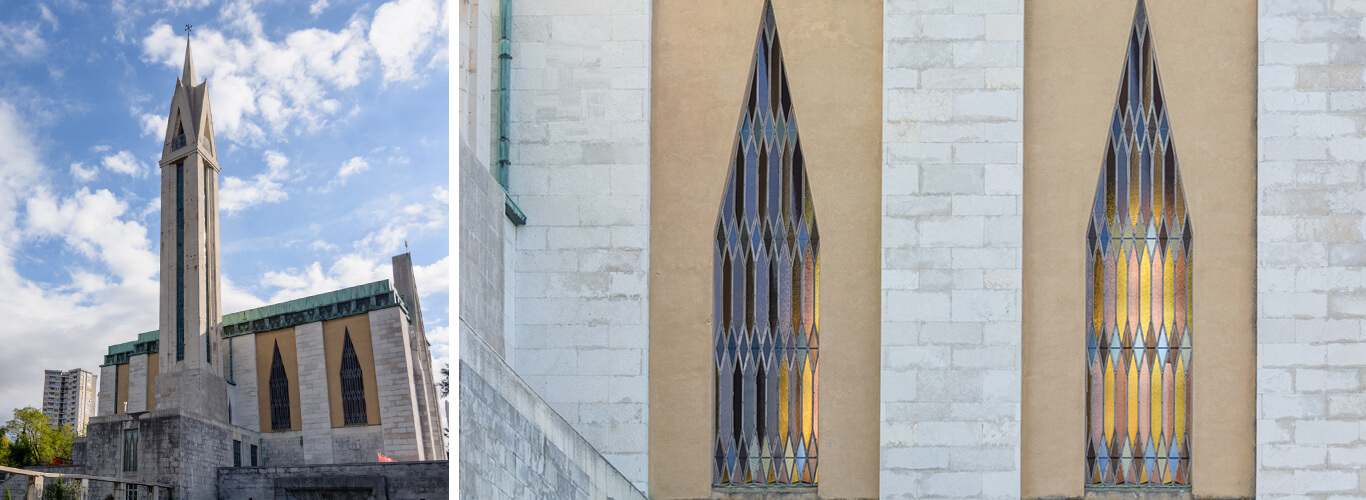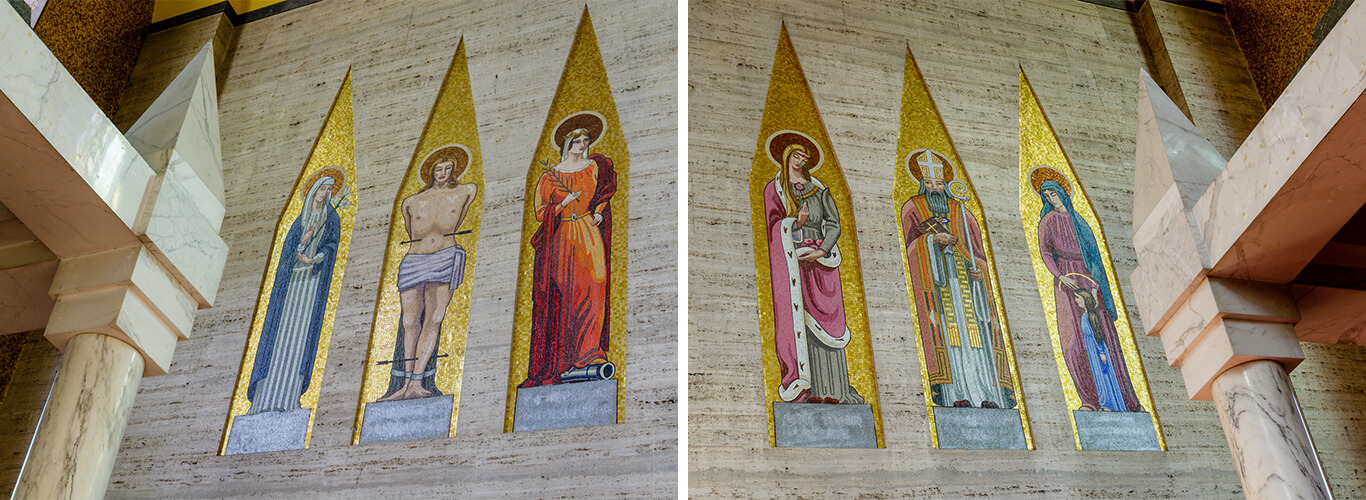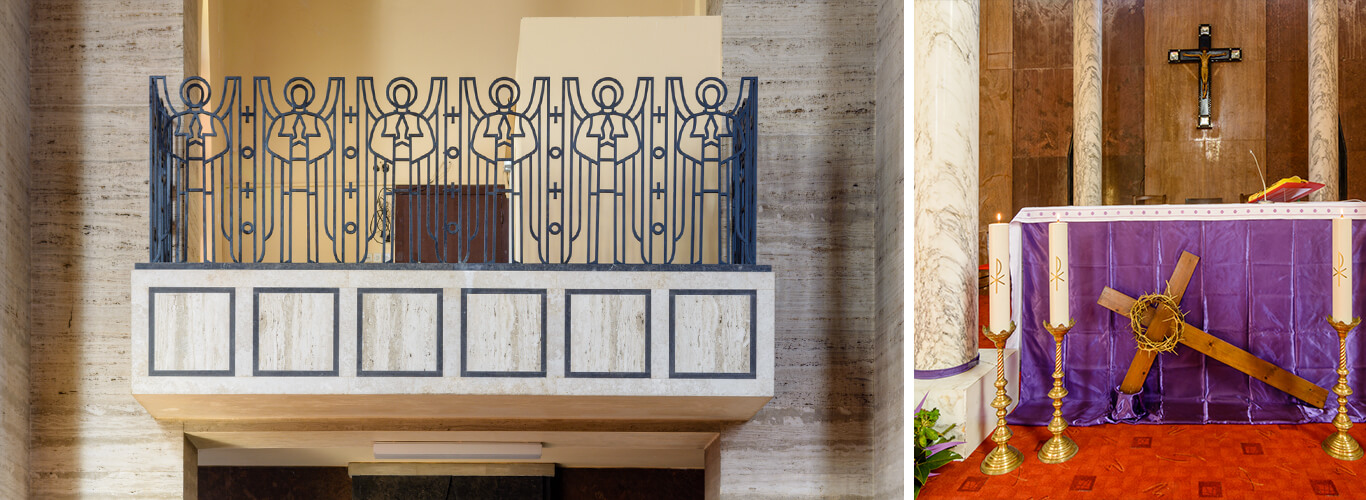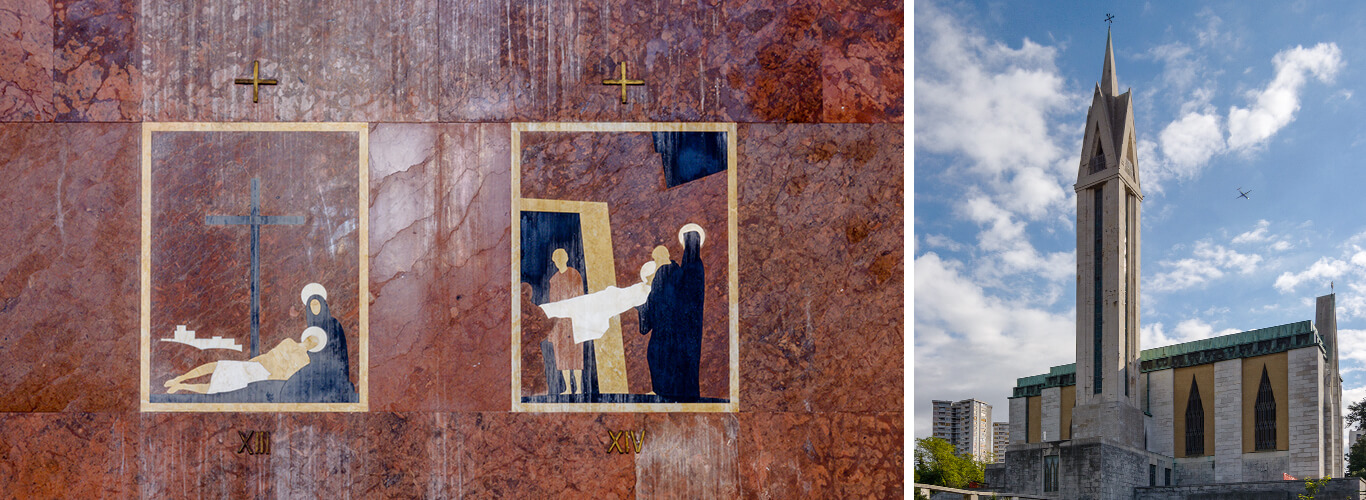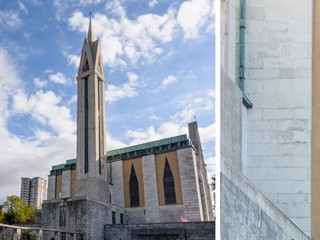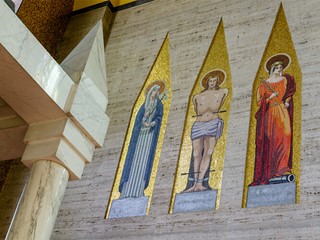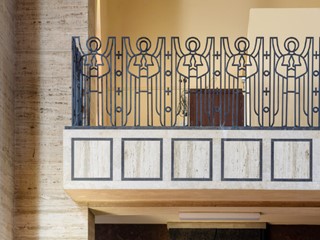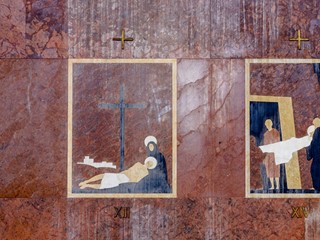Votive Temple Kozala
address: 25 Baštijanova StreetPeriod: Modernism
Kind: Immovable material heritage
Century:
Year: 1934
Purpose: sacral
The Votive Temple on Kozala or the Church of St Romuald and All Saints was erected in 1934 during Italian government in Rijeka, according to the project by Bruno Angheben.
The church was raised over a crypt which holds the bones of Gabrielle D’Annunzio’s 458 legionaries, who died in 1924 on the Bloody Christmas in Rijeka, but also in Italy. The tomb was dedicated as a war cemetery and was opened on 16 March 1930 on the anniversary of the arrival of the Italian king Vittorio Emanuele III to Rijeka. A Memorial Park, Parco della Rimembranza, was arranged around the church and the tomb.
The construction of the church was stimulated by D’Annunzio’s speech during the burial of his legionaries who died in Rijeka, and was financed for political reasons. The title of the church (St Romuald) is a sign of honour to D’Annunzio, as this was the name of his father. The construction was supported politically and financially by the Italian government headed by Benito Mussolini, with the most prominent supporter being Senatore Borletti, who also supported the construction with his personal finances.
The first project, published in the papers immediately before the construction, was made in neo-Romanesque and neo-Gothic style, with emphasis on traditional material, brick and stone. The project changed significantly until the beginning of construction. Angheben cleared the lines and the façade, thus gaining severity and monumentality of the construction. The church was dedicated to St Romuald and All Saints on the tenth anniversary of annexation in September 1934, alluding to D’Annunzio’s Holy Entrance into the city.
The church is entered from a wide plateau accessed from a double staircase. The church is a hall church with rectangular layout. It is covered with white Istrian stone, which due to minimalistic decoration gives a feeling of monumentality. The author repeats the spiked form on the portal, the bell tower and the windows. Together with the pointy cypresses around it, the church seems as if it were aspiring for the sky. Along the portal, at the entrance, there are statues of two angels made by the famous artist Romolo Venucci from Rijeka.
The interior, just like the exterior, is simple. It is dominated by triangular and rectangular shapes, harmonized with the polychrome marble in black, brown and grey. The interior of the church is adorned by Angheben’s wall incrustation of the Way of the Cross in 14 stations, the statue of St Romuald by the artist Ladislaoa de Gaussa and the crucifix by Edmond Treverse.
The city cemetery Kozala is the oldest and the most beautiful city cemetery. The city administration of the former Rijeka used to buy land for it from the middle of the 18th century, while the burials officially started on 1 December 1838. Since 1872 until today, the burial register in the Burial Records has constantly been kept, so sometimes this date is taken as the official beginning of the cemetery. The cemetery Kozala is a treasury of art achievements of sculptors such as Ivan Rendić, Giovanni Mayer, Urbano Bottasso, Domenico Rizzo, Donato Barcaglija and architects Emilio Ambrosini, Francesco Placsek, Ignazio Rossi, Ugo Pagano, Giacomo Mattich, Raffaelle Cullotti.
Next to the Crypt, there was originally the Museum of Annexation, which no longer exists. It is interesting that the 63-metre high bell tower has an elevator installed.
Valorization:
The entire cemetery Kozala is protected as a cultural-historical whole in the Republic of Croatia Register of Cultural Goods.
Bibliography:
Glavočić, Daina, Votivni hram na Kozali, Čovjek i prostor: arhitektura, kiparstvo, slikarstvo i primijenjena umjetnost, vol. 35, 1988, p. 16.
http://fluminensia.org/tag/crkva-na-kozali#sthash.53jmsN6j.dpuf
Lozzi-Barković, Julija, Arhitektura Rijeke i Sušaka između dva rata (5): Crkva na Kozali, Novi list, 20 March 2015, Link: http://www.novilist.hr/Kultura/Arhitektura-Rijeke-i-Susaka-izmedu-dva-rata-5-Crkva-na-Kozali
http://zupakozala.blogspot.hr/
Lozzi Barković, Julija, Međuratna arhitektura Rijeke i Sušaka, usporedba i europsko okruženje, Adamić, Rijeka, 2013, pp. 351–359.
Moravček, Goran: Nestale riječke crkve, Sušačka revija, no. 70/71, 2010. Link: http://www.klub-susacana.hr/revija/clanak.asp?Num=70-71&C=10 (27.1.2016.)
Glavočić, Daina, Riječko groblje Kozala, Hrvatska revija, no. 3, 2008, Link: http://www.matica.hr/hr/351/Rije%C4%8Dko%20groblje%20Kozala/
Glavočić, Daina, Groblje Kozala, Zbornik Dometi, no. 2, 1993, pp. 198–206.
Kozala: Monografija o riječkom komunalnom groblju i o kulturi pokapanja u Rijeci, u povodu 130 godina vođenja njegovih knjiga ukopa, ed. Velid Đekić, Komunalno društvo Kozala, Rijeka, 2002.
Glavočić, Daina, Arhitektura i skulptura riječkog groblja Kozala, in: Rijeka u stoljeću velikih promjena, ed. Melita Sciucca, Book of Proceedings, Edit, Rijeka, 2001, pp. 69–71.

